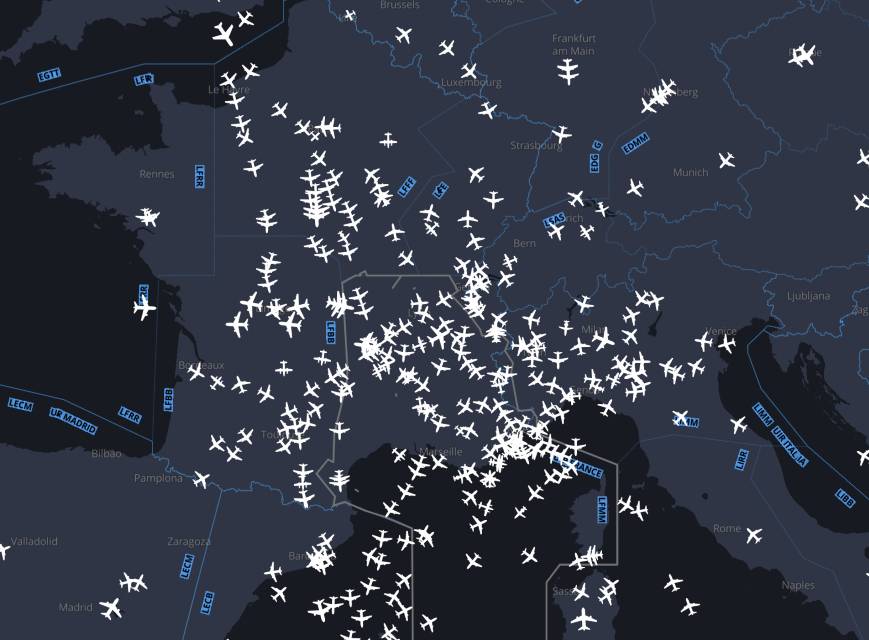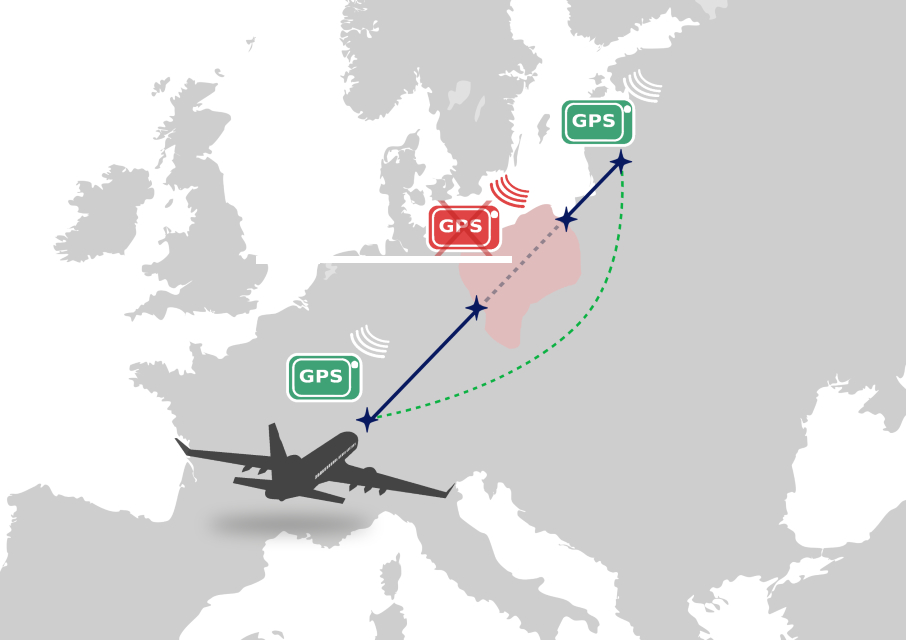
Historically, Communication, Navigation and Surveillance Data Service Provision has been inherently constrained by the infrastructure that generates the data. Today, with the regular increase in air transport demand and the everlasting quest for optimisation, more sophisticated ATM solutions are being implemented and the need for data as a service has emerged.
The three year “Demonstration of a CNS Data Service Provision” (CNS DSP) kicked off in September 2023, as part of the European “Digital European Sky” programme managed by SESAR 3 JU (Single European Sky ATM Research Joint Undertaking) project. One of CNS DSP’s principal objectives is to accelerate the market uptake of communication, navigation and surveillance (CNS) data services.
Starting at TRL (Technology Readiness Level) 2 and set to reach TRL 7, CNS DSP is classed as a “Fast Track Innovation and Uptake” project. The project is also a member of SESAR 3’s “Virtualisation and cyber-secure data sharing” flagship initiative encouraging coordination between similar projects contributing strongly to the digitalisation of European ATM.
Led by European Satellite Services Provider (ESSP), the CNS DSP project consortium consists of nine members (see box out). The project has received funding from the SESAR 3 Joint Undertaking (SJU) under grant agreement No 101114706 and is supported by the SESAR 3 Joint Undertaking and its founding members.

Added Value for Safety-Critical Applications
The overall process of data provision is conceived as a sustainable activity. Data service distribution creates monetised added value which is distributed equitably along the entire data chain.
A provider of input data could be also a platform end user of another type of data. Platform end users may also need data for purposes other than ATM and belong to non-aviation sectors. Potential fields of application include the virtualisation of Air Traffic Control (ATC) centres; unmanned aircraft traffic management (U-space); new added-value applications; artificial intelligence (AI) development, and research.
Each platform end user will need to be registered and sign a service provision contract with the data service provider entity. Amongst diverse elements, the contract will include specifications of responsibilities, user types, technical prerequisites, financial compensation and performance commitments. This is necessary to ensure quality of service, to enforce security and data governance policy, as well as the viability of the business model.
The project paves the way for enabling data service usage in safety-critical environments, also known as ADSP – ATM Data Services Provider by providing a framework for data sharing between the data consumers and producers of the platform.
Data governance, regulation, standardisation and security domains are addressed to consider existing requirements and identify potential open points requiring further harmonisation. Input data will be provided by verified sources as per CNS data quality standards to ensure the data is sufficiently reliable for safety-critical environments. As per the applicable regulation, CNS data service provision shall be certified by competent authorities, similarly to EGNOS or IRIS services.

A One-Stop Shop Platform
The One-Stop Shop concept means that all platform end users submit their requests and receive needed data service through the same central CNS DSP platform, based on System Wide Information Management (SWIM) principles and APIs (Application Programming Interfaces), regardless of the solution involved. Processing, archiving, user access management and other tasks are performed internally.
For each platform end user, the central CNS DSP platform will have access to its user type, agreed type and level of service, data access rights and other relevant parameters to provide services tailored to users’ specific needs, while guaranteeing efficient security and data governance policy implementation.
The central CNS DSP platform leverages the latest technologies, infrastructure and cloud-based architecture to meet stringent service requirements, related to efficient data management, security, safety and performance. The technical implementation is scalable and future-proof as it can be upgraded to support more data types, users or functionalities while maintaining the advantages of standardised formats and state-of-the art technology.
New platform end users can be added rapidly by defining their user-specific parameters within the built-in user management interface. New input data formats or new providers would require platform software upgrade as one or more new gateways might be needed and internal platform functionalities would likely require adjustments.

Data Service Solutions
CNS DSP proposes three new solutions. These include a multi-sensor surveillance tracking service, an ATM data service provider for tactical and post operations and real-time Global Navigation Satellite Systems (GNSS) monitoring and interference.
A multi-sensor surveillance tracking service provides consolidated cross-border picture of situation in airspace by integrating and consolidating surveillance data according to ADSP concept. Being also aligned with the ATC virtual centre triangle architecture for surveillance services and compliant with relevant regulations and standards such as EU Reg No. 2017/317, 2018/1139 Annex VIII and EUROCAE ER-026, the solution is suitable as a contingency option for Virtual Centres.
The service aggregates data from multiple surveillance sources, such as secondary radars and ADS-B, to extend cross-border coverage. Depending on potential constraints on input data, for example privacy and confidentiality, certain data may be filtered out either before leaving its source entity or at the entry into the platform, to prevent it from being distributed, processed or archived in any way.
Output surveillance data is provided in ASTERIX CAT62 format used to transmit system track data for ATM users and in a SWIM compliant (Yellow Profile) simplified JSON format for others, a highly widespread language-independent text format for data exchange.
Amongst the principal benefits are a cohesive surveillance picture thanks first and foremost to diverse data sources, the sharing of data and connectivity through standardised mechanisms and the creation of a more resilient infrastructure.

The ATM data service provider for tactical and post ops solution delivers critical information to ATM stakeholders for tactical and post-operation phases. By integrating the multisensor surveillance tracking service, the solution augments surveillance data with trajectory prediction, flight data from the network manager and meteorological data and data from other sources. Secure access to live and offline data is available.
This solution is also connected to the real-time GNSS monitoring and interference solution to enable their mutual cross-correlation, filtering and augmentation.
Real-time GNSS monitoring and interference provides users with tools for monitoring GNSS signal performance, position integrity and interferences. The solution provides both real-time and offline GNSS status per area, route and related PBN (performance based navigation) application.
The Advanced Receiver Autonomous Integrity Monitoring (A-RAIM) tool computes the estimated integrity parameters based on the constellation geometry, visibility and signal quality assumptions so platform end users such as airlines and drone operators can predict the expected level of GNSS service provision. This is in line with ICAO GNSS manual in relation to the GNSS monitoring concept according to which GPS and RAIM are used in all phases of flight.
Thanks to the internal connection with the previous two solutions, platform end users can gain insight into the expected impact of RFIs or GNSS underperformance on specific operations, timeframe or other parameters customised as per their current operational priorities.
In practice, this interconnection enables the end users to understand more easily operational impact to their activities and trigger predefined contingency procedures. For example, an airline can rapidly visualise which specific flights are or will likely experience issues with GNSS, at what time and location the issues are encountered/expected and where mitigation measures should be applied.
The airline can then recommend switching aircraft navigation source and aircraft time reference from GNSS to internal or manual to preserve navigation performance and ATC capabilities, for example ATC datalink applications, before a known point in the flight plan, provided of course that the concerned aircraft models allow such switches to be performed.
The real-time GNSS monitoring and interference solution integrates and complements the initial work performed within the BLUEGNSS project, previously funded by the European Union Agency for the Space Programme.
Some of expected benefits include: the integration of surveillance data with GNSS monitoring; improved situational awareness and decision making by provision of augmented data,; facilitated digital transformation, enhanced connectivity and cost efficiency by leveraging state-of-the art technologies, and scalability and resilience enabled by modern infrastructure.
All three solutions designed by the project contribute directly to digitalisation, through easier connectivity and data sharing pillars of digitalisation, contributing in turn to multiple key performance areas (KPAs) defined in the European ATM Master Plan.

Next Steps
Until the end of February 2025, the project will be focusing on deliverables that include maturing service definition, technical specifications, validation objectives and pursuing development of the platform prototype. This also includes performing specialised assessments focused on regulation, standardisation, safety, security, and performance The outcomes will be published as part of the intermediate datapack of formal project deliverables currently scheduled for end of February 2025.
Validation exercises will follow between April and September next year. Eight validation exercises are currently planned in 2025. These validation exercises include laboratory tests as well as real-time simulations. Their results will be presented in the project deliverables and appropriate dissemination activities will be conducted.



Demonstration of a CNS Data Service Provision members
Led by European Satellite Services Provider (ESSP), the project’s consortium consists of:
Collins Aerospace, an RTX Business, – as an industry partner
DSNA, Direction des Services de la Navigation Aérienne – the French ANSP
ENAV, Italian Air Navigation Service Provider (ANSP)
DS Airnav, an ENAV Group company
PANSA, Polska Agencja Zeglugi Powietrznej – the Polish ANSP
Skyguide, the Swiss ANSP
Thales LAS, an industry partner
Telespazio, an industry partner
Stay up to date!
Follow the latest updates on the “CNS Data Service Provision SESAR Project” channels on LinkedIn, X and via the SESAR website:
